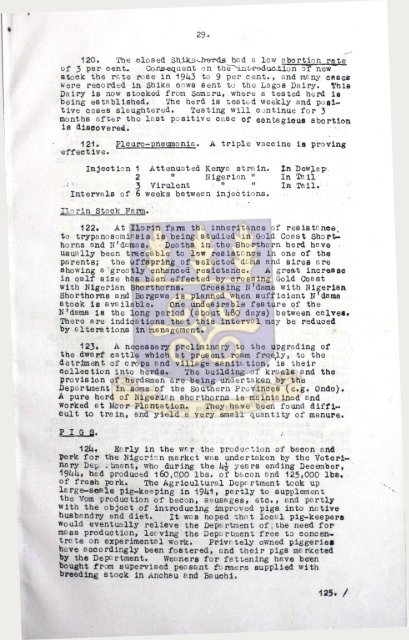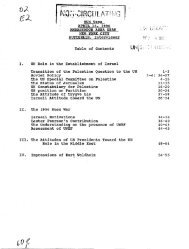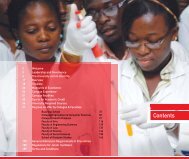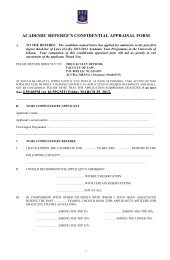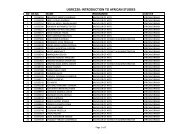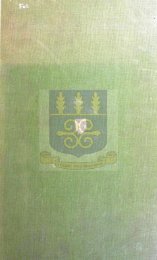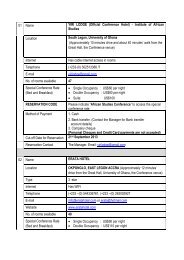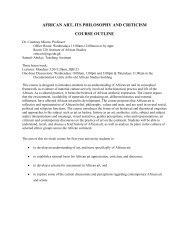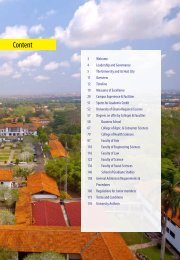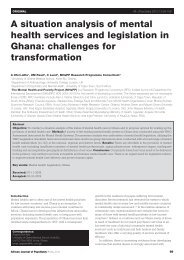View/Open - UGSpace - University of Ghana
View/Open - UGSpace - University of Ghana
View/Open - UGSpace - University of Ghana
- No tags were found...
You also want an ePaper? Increase the reach of your titles
YUMPU automatically turns print PDFs into web optimized ePapers that Google loves.
29-120. The closed Sh;LkiJ-J>9-rds had a low abortion raLte<strong>of</strong> 3 per cent- Consequent on the^ijitH^dtuxtion o'f new""stock the rate rose in 1943 to 9 per cent., and many caseswere recorded in Shika cows 6ent to the Lagos Dairy. ThisDairy is now stocked from Samaru, where a tested herd isbeing established. The herd is tested weekly and positivecoses slaughtered. Testing will continue for 3months after the last positive case <strong>of</strong> contagious abortionis disoovered.121. Pleuro-pneomonia. A triple vaccine is provingeffective.Injection 1 Attenuated Kenya strain. In Dewlap\2 " Nigerian " In Ta11 -3 Virulent " " In Tail.Intervals <strong>of</strong> 6 weeks between injections.Ilorln Stock Farm.'122. At Ilorin farm the inheritance <strong>of</strong> resistance,to trypanosomiasis is being studied in Gold Coast Shorthornsand N'damos. Deaths in the Shorthorn herd haveusually been traceable to low resistance in one <strong>of</strong> theparents; the Offspring <strong>of</strong> selected dams and sires areshowing a'greatly enhanced resistance. A great increasein oalf size has been effected by crossing Gold Coastwith Nigerian Shorthorns. Crossing N'dama with NigerianShorthorns and Borgawa is planned when sufficient N'damastock is available. One undesirable feature <strong>of</strong> theN'dama is the long period (about 480 days) between calves.There are indications that this interval may be reducedby alterations In management.123. A necessary preliminary to the upgrading <strong>of</strong>the dwarf cattle which at present roam free,ly, to the .detriment <strong>of</strong> crops and village sanitation, is theircollection into herds. The building <strong>of</strong> kraals and theprovision <strong>of</strong> herdsmen are being undertaken by theDepartment in some <strong>of</strong> the Southern Provinces (e.g. Ondo).A pure herd <strong>of</strong> Nigerian shorthorns is maintained andworked at Moor Plantation. They have been found difficultto train, and yield a very small quantity <strong>of</strong> manure.124. Early in the war the production <strong>of</strong> baoon andpork for the Nigerian market was undertaken by the VeterinaryDep i tment, who during the 4i years ending December,1944, had produced 160,000 lbs. <strong>of</strong> bacon and 125,000 lbs.<strong>of</strong> freah pork. The Agricultural Department took uplarge-scale pig-keeping in 1941, partly to supplementthe Vom production <strong>of</strong> bacon, sausages, etc., and partlywith the object <strong>of</strong> introducing improved pigs into nativehusbandry and diet. it was hoped that local pig-keeperswould eventually relieve the Department <strong>of</strong>;the need formass production, leaving the Department free to concentrateon experimental work. Privately owned piggerieshave accordingly been fostered, and their pigs marketedby the Department. Weaners for fattening have beenbought from supervised peasant farmers supplied withbreeding stock in Anchau and Bauchi.125. /


